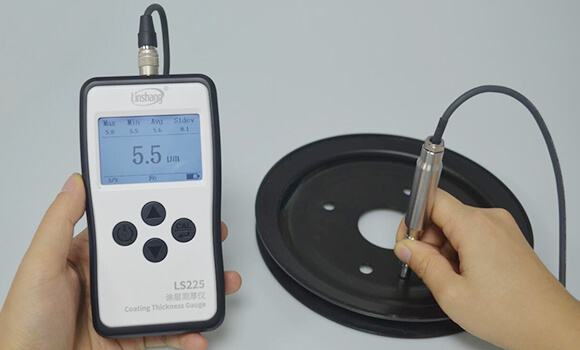Differences between Electrophoresis and Electroplating
With the popularization and application of hardware workpieces on the market, the requirements for its surface coating are becoming higher and higher. Current coating methods mainly include electrophoresis and electroplating. Plating thickness gauge is a high precision plating thickness measurement tool used to test the plating thickness.
1. Differences between electrophoresis and electroplating are as follows:
(1) The difference in appearance
Electrophoresis parts: Without changing the electrophoresis line, as long as the color paste of the bath liquid is mixed, a variety of colorful workpieces can be made. Electroplated parts: If you want to make a variety of colors, you need vacuum plating. Electroplating can enhance the corrosion resistance of metals, increase hardness, improve conductivity, smoothness, prevent wear, heat resistance and beautiful surface. Therefore, in terms of appearance difference, electroplated parts have a metallic feel, while electrophoretic parts only have the oily feel of paint.
(2) The functional difference
Electrophoresis refers to the technology that charged particles move toward an electrode opposite to their electrical properties under the action of an electric field. Use charged particles to move at different speeds in an electric field to achieve separation. It mainly includes four processes: electrolysis, electrodeposition, electrophoresis and electroosmosis. Electroplating refers to the process of plating a thin layer of other metals or alloys on the surface of some metals using the principle of electrolysis. The process of using electrolysis to attach a metal film to the surface of metal or other materials to prevent metal oxidation corrosion), improve wear resistance, reflective, electrical conductivity, corrosion resistance and enhance aesthetics.
(3) The difference in cost
Electrophoresis is a layer of resin plated and electroplating is a layer of metal plated. Electrophoresis is simpler and more convenient than electroplating. In terms of cost, electrophoresis is much cheaper than electroplating.
2. Use of plating thickness gauge

Both electrophoretic and electroplated layers on metals can be measured with Linshang plating thickness gauge LS225. This is a new high precision plating thickness gauge launched by Linshang Technology, which is used to measure the thickness of ultra-thin platings.
The plating thickness gauge LS225 uses an ultra-small probe. It is also suitable for thin plating measurement on small workpieces such as nails and bolts. The paint mil gauge has its own statistical function, which can automatically count the maximum, minimum, average and standard deviation of the last 9 measured values.
Linshang Technology also provide other coating thickness gauges, if you want to know about the automotive paint meters used to test the car paint thickness, please read "Guide for Selecting Car Paint Thickness Tester".
- High precision coating thickness gauge for used car
- Automotive paint protection films coating thickness gauge
- Plating Thickness Measuring Instrument for Detecting Anti-corrosion Coating
- Linshang LS220, LS191, LS160A– Necessary for Car Cover Inspection
- Coating Thickness Gauge for Second Hand Vehicle
- Zero Adjustment Step of Coating Thickness Gauge